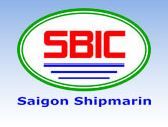Vietnamese Defense Industry Report 2018 - Market Attractiveness, Competitive Landscape and Forecasts to 2023 - ResearchAndMarkets.com
The "Future of the Vietnamese Defense Industry - Market Attractiveness, Competitive Landscape and Forecasts to 2023" report has been added to ResearchAndMarkets.com's offering.
The growing strength of the Chinese Navy and its assertiveness with regards to territorial claims in the South China Sea has compelled the Vietnamese Government to enhance its military capabilities. In addition, the country is in the process of addressing its limitations with respect to combating modern threat scenarios with its existing obsolete equipment, and has embarked on military modernization plans over the last few years.
This has driven Vietnam's defense expenditure throughout 2014-2018 and is expected to do so over. The Vietnamese Government allocated US$5.4 billion towards military expenditure in 2018, of which 32.2% is earmarked for the procurement of defense equipment. The country's defense expenditure increased at a CAGR of 6.14% over 2014-2018.
The country's economy is projected to grow at a CAGR of 8.99% over the forecast period, and defense expenditure as a percentage of GDP is expected to average 2.1%. However, slow population growth is projected to increase per capita defense expenditure to US$76.9 by 2023.
Vietnamese homeland security expenditure, on a cumulative basis, is expected to be US$20.5 billion over the forecast period. Efforts to police its maritime boundaries, coupled with the need to counter human trafficking and the illicit drug trade are anticipated to drive homeland expenditure. This is likely to increase the demand for equipment capable of enhancing seaport and airport security as well as border surveillance systems such as CCTV cameras and scanners.
The country's limited domestic defense industrial capability offers an opportunity for a considerable number of foreign OEMs to venture into the Vietnamese defense market. Vietnam's defense industry is largely dominated by Russian defense equipment suppliers, but other European and Israeli suppliers have recently entered the defense market through direct commercial sale of advanced defense systems. Moreover, Vietnam prefers government-to-government deals when procuring armory; therefore, developing government-to-government relationships is expected to open up business opportunities over the forecast period.
Key Topics Covered:
1. Introduction
2. Executive Summary
3. Market Attractiveness and Emerging Opportunities
4. Defense Procurement Market Dynamics
5. Industry Dynamics
6. Competitive Landscape and Strategic Insights
7. Business Environment and Country Risk
8. Appendix
Companies Mentioned
- Vietnam Shipbuilding Industry Corporation (SBIC)
- Sukhoi JSC
- Admiralty Shipyards
- Damen Schelde Naval Shipbuilding (DSNS)
For more information about this report visit https://www.researchandmarkets.com/research/tw3bx7/vietnamese?w=4.
View source version on businesswire.com: https://www.businesswire.com/news/home/20180827005367/en/







